
TOPIC



TOPIC

Letter from the Editors
Embracing Uncertainty: Student Stories
Developing Resourcefulness: An Interview with Dr. Jane Freeman
Mochi Mind: An Introduction to Complex Trauma and C-PTSD
The Science of Stress Reduction Techniques
Positive Coping Strategies: “Thinking Traps” & Tips for Dealing with Unhelpful Thoughts
“Just Keep Going”: An Inspirational Interview with Dr. Andrew Simone
Complexity and Hope: A Summary of Murrough and Russo
A Review of Mental Health Apps for Meditation, Mindfulness, and Motivation
How The PEARS Project Fosters Resilience & Community Trauma and Healing: A Review of The Body Keeps the Score By Bessel van der Kolk, M.D.
Mind and Body: A Summary of Cathomas et al.
Rocky (1976): Twin Underdog Stories
Self-Care on the Air: Five Great Mental Health Podcasts Shkaabe Makwa, bringing First Nations, Inuit, and Metis Mental Health to the Forefront: An interview with Louis Busch

Monk and Robot: HopePunk’s Emotional Journeys of Self-Discovery
Food Insecurity, Grocery Costs, and Nutrition
A Book Review of The Sleep & CBT-I Workbook Learner’s Success: The Importance of a Growth Mindset
Weare excited to present the 11th edition of Elemental Magazine, the University of Toronto’s official tri-campus mental health magazine. For this edition, we wanted to focus on the resiliency of our graduate student writers and share their stories of hope and resilience. As such, this special edition includes stories for our team of journalists and their journey of mental health and recovery. The theme for this issue is Fostering Hope and Resilience.
Students across the globe experience high rates of anxiety, stress, depression, and other mental health concerns1. These experiences and symptoms have only been exacerbated in the context of the COVID-19 pandemic2. Research has found that emerging adults aged 18-29 were the most impacted population during this time3. Despite identifying the
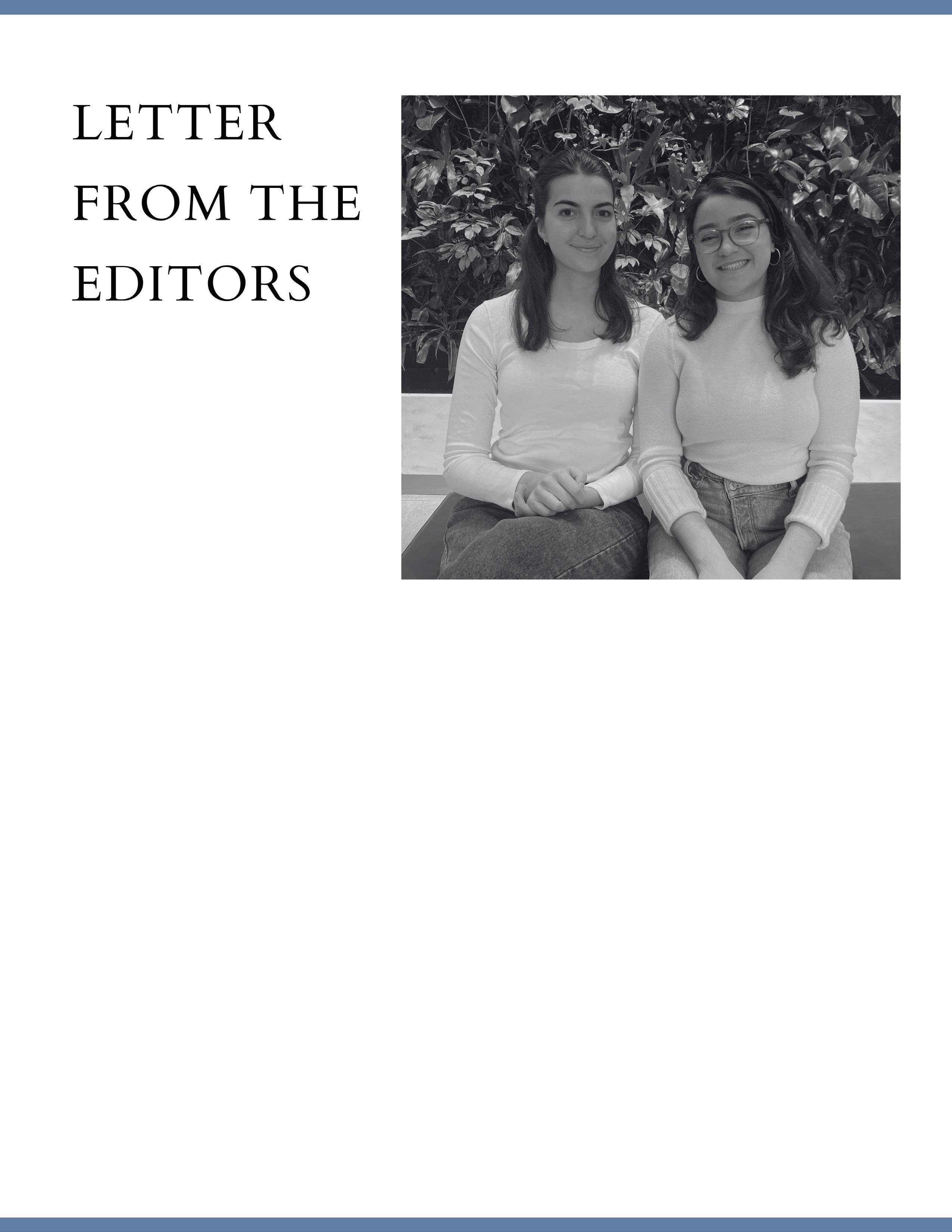
impact imposed on student mental health, limited research has focused on the resilience in this population and the ways in which they have been coping during such difficult times4. As such, we decided to focus this issue on the ways in which university students across the UofT community have found hope and persevered in the face of adversity.
In the current issue, students across the University of Toronto community share their stories of hope and resilience. UofT’s Dr. Jane Freeman discusses developing resourcefulness in graduate students. Complex trauma and complex post-traumatic stress disorder is introduced and discussed. Helpful stress reduction techniques and positive coping strategies for unhelpful thought patterns are also presented in the current issue. Dr. Andrew Simone, a Toronto
for unhelpful thought patterns are also presented in the current issue. Dr. Andrew Simone, a Toronto dermatologist, shares his inspirational story of resilience. We also present a review of apps and podcasts that support or discuss mental health. Scientific papers are also presented and summarized in the context of the issue’s theme. UofT’s PEARS project, a survivor-led and studentrun anti gender violence and anti-sexual violence group on campus are interviewed and share how they are fostering resilience and community at UofT. Popular books such as the Body Keeps the Score are reviewed. Sylvester Stallone’s 1976 film Rocky is also reviewed in the context of hope and being a true “underdog” story. We also hear from Louis Busch on Shkaabe Makwa, Canada’s first hospital-based centre for First Nations, Inuit, and Métis communities. The genre of HopePunk is explored in the context of resilience. We also tackle food insecurity and the importance of a growth mindset in the current issue.
We would like to extend our gratitude to the Elemental journalists, illustrators and editorial team for their hard work and contribution to this issue. We would also like to extend our thanks to the Chair of Grad Minds, Daisy Hu, and the Grad Minds team for their support.
Sincerely,
Lola Leving & Talia Vacca1. Asif, S., Mudassar, A., Shahzad, T.Z., Raouf, M., & Pervaiz, T. (2020). Frequency of depression, anxiety and stress among university students. Pak J Med Sci, 36(5), 971-976. https://doi.org/10.12669/ pjms.36.5.1873
2. Emery, R.L., Johnson, S.T., Simone, M., Loth, K.A., Berge, J.M., & Neumark-Sztainer, D. (2021). Understanding the impact of the COVID-19 pandemic on stress, mood, and substance use among young adults in the greater Minneapolis-St. Paul area: Findings from project EAT. Social Science & Medicine, 276. https://doi. org/10.1016/j.socscimed.2021.113826
3. Hotex, E., Gragnani, C., Fernandes, P., Rosenau, K.A., Chopra, A., Chung, A., Huynh, S., Jackson, T., Jimenez, K., Jue, E., Le, N., Lenghong, J., Lopez, A., Omo-Sowho, P., Pennington, K., Tirado, R., & Kuo, A. (2021). Capturing the experiences and challenges of emerging adults in college during COVID-19 pandemic. Cureus. https://doi. org/10.7759/cureus.17605
4. Prowse, R., Sherratt, F., Abizaid, A., Gabrys, R.L., Hellemans, K.G.C., Patterson, Z.R., & McQuaid, R.J. (2021). Coping with the COVID-19 pandemic: Examining differences in stress and mental health among university students. Front. Psychiatry, 12. https://doi.org/10.3389/fpsyt.2021.650759
 Co-Editors-in-Chief, Elemental Magazine
Co-Editors-in-Chief, Elemental Magazine
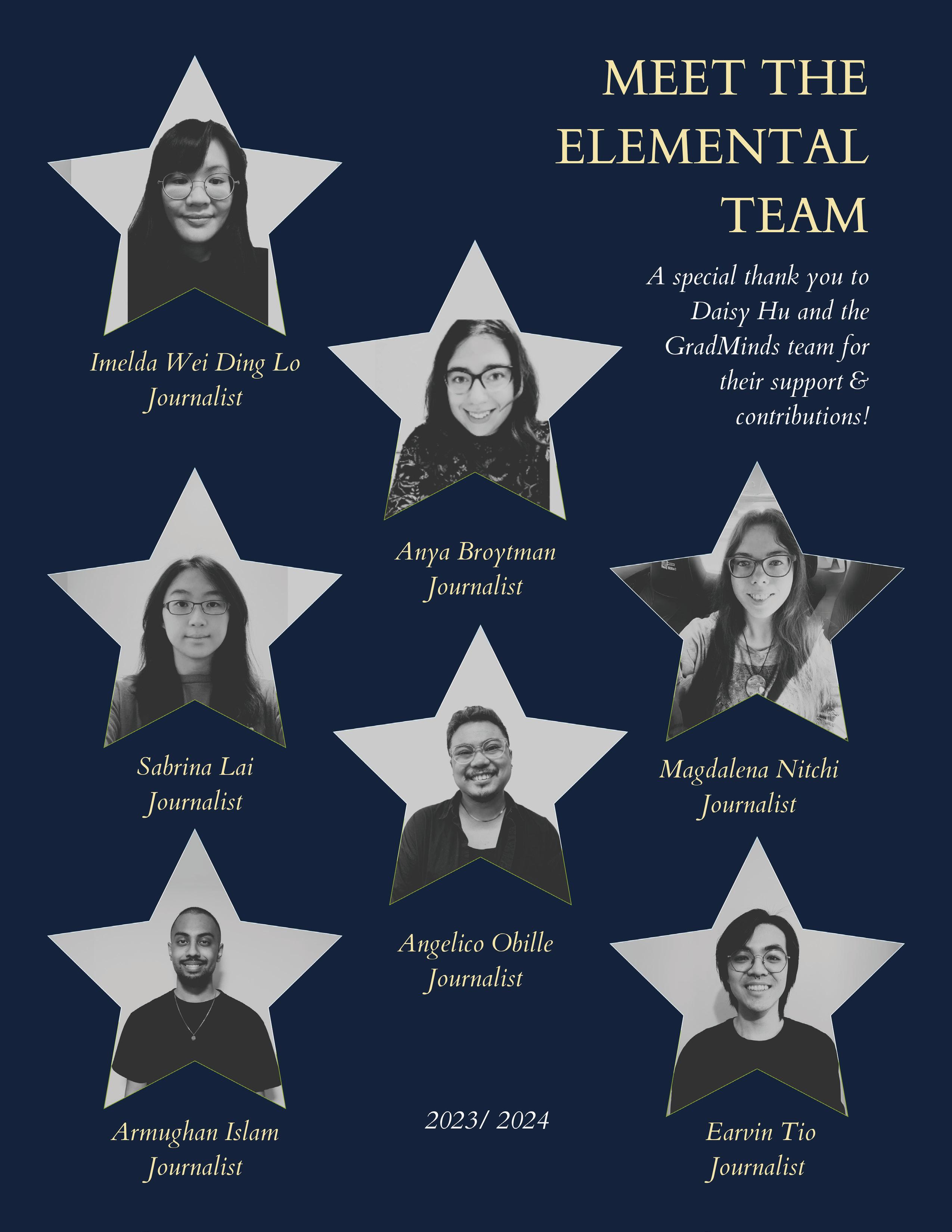
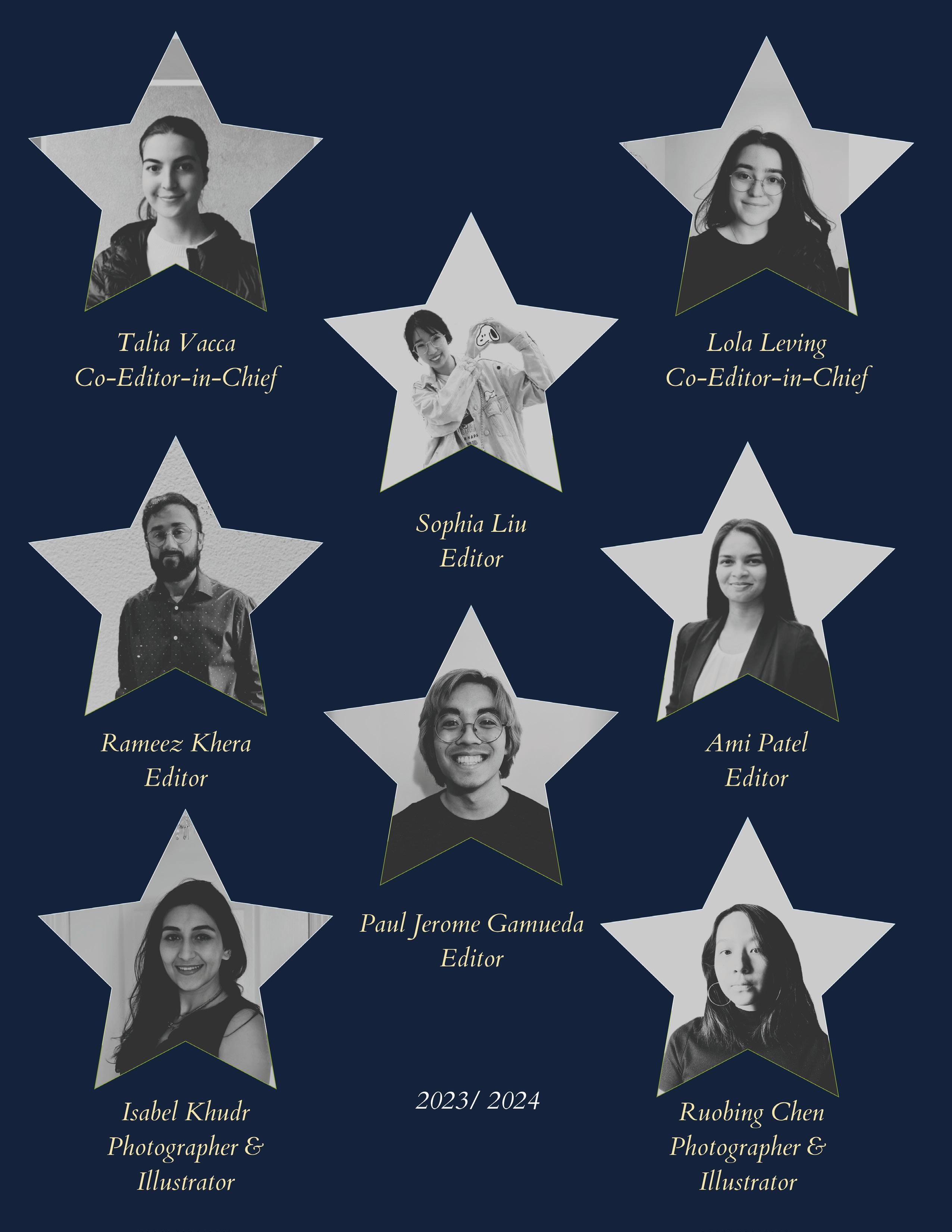
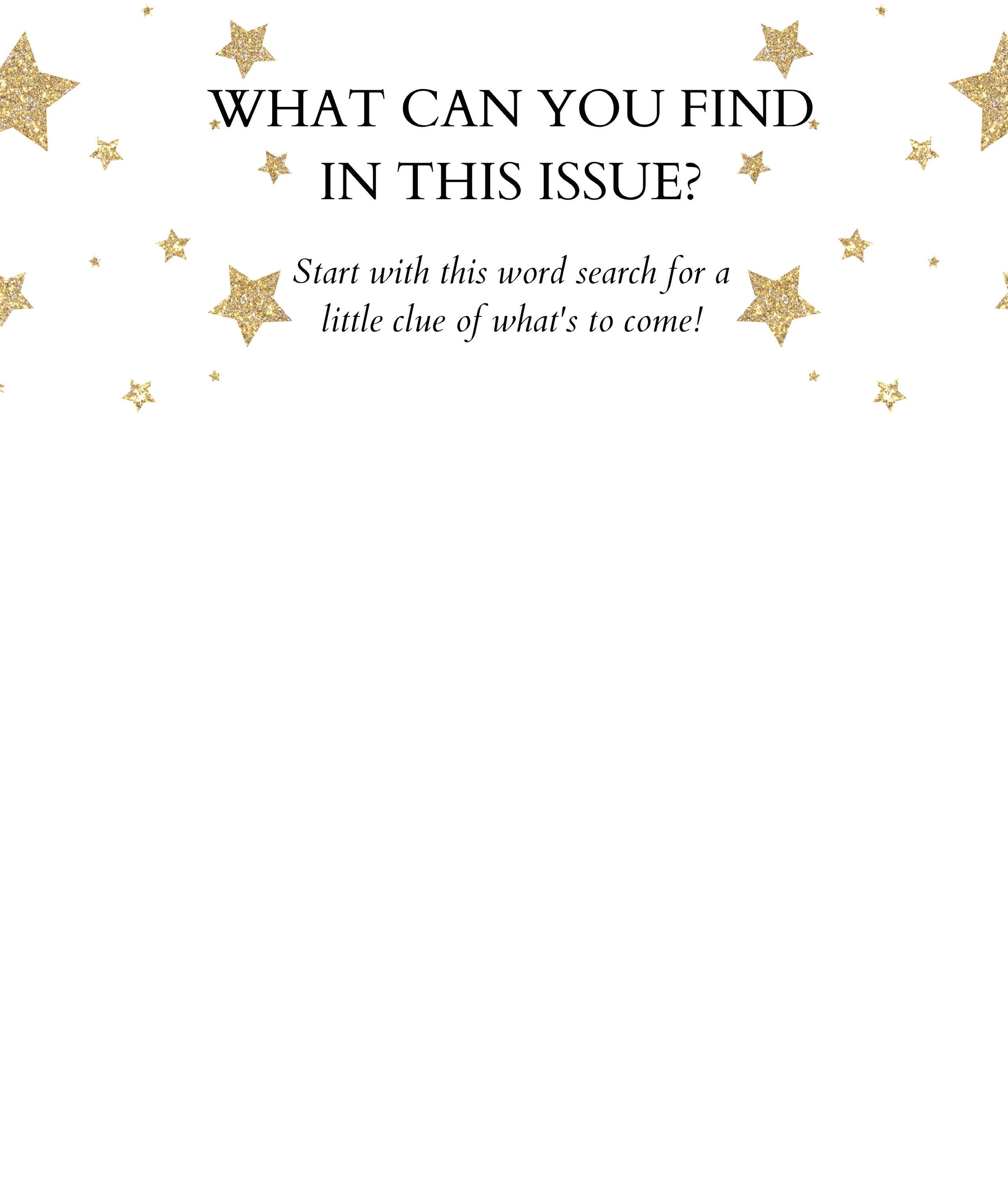
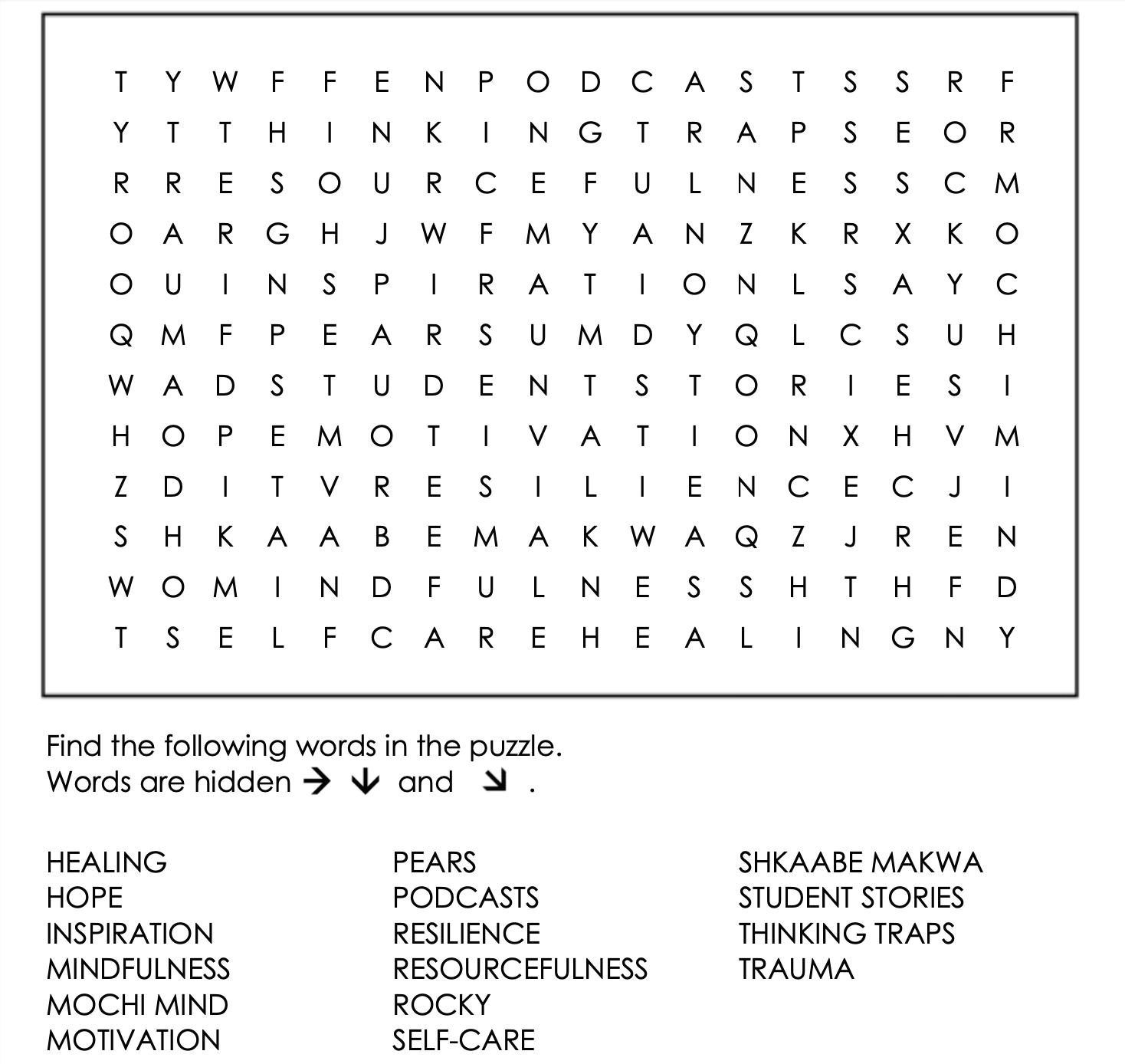


Thought of the day:
"The human capacity for burden is like bamboo – far more flexible than you'd ever believe at first glance."
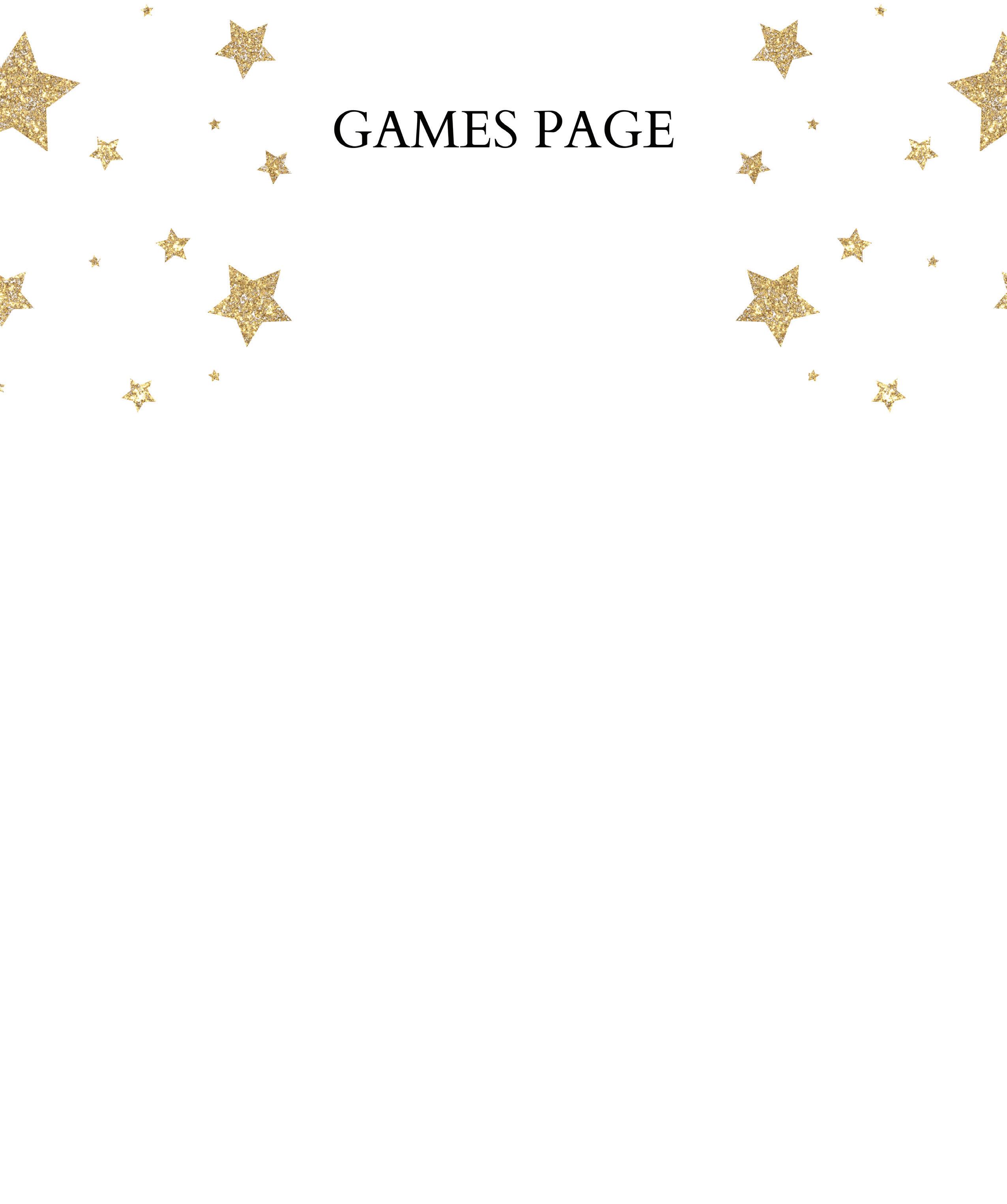
– Jodi Picoult, My Sister's Keeper


“I’m here. I’m here again. I can’t believe it,” I whispered to myself as the familiar Gothic spires of Trinity College came into view.
Trinity College has always held a special place in my heart. In 2011, during the last semester of Grade 12, I applied and was accepted into Trinity College. Stepping onto campus for the first time as a sheltered, bright-eyed-and-bushy-tailed 18-year-old, I was instantly awestruck by its gorgeous chapel, majestic quad, and inviting common rooms.
As I strolled through the quad after my first Master of Arts in Political Science class, retracing the paths I walked as an undergrad, memories of my teenage years and early twenties flooded back. The bright
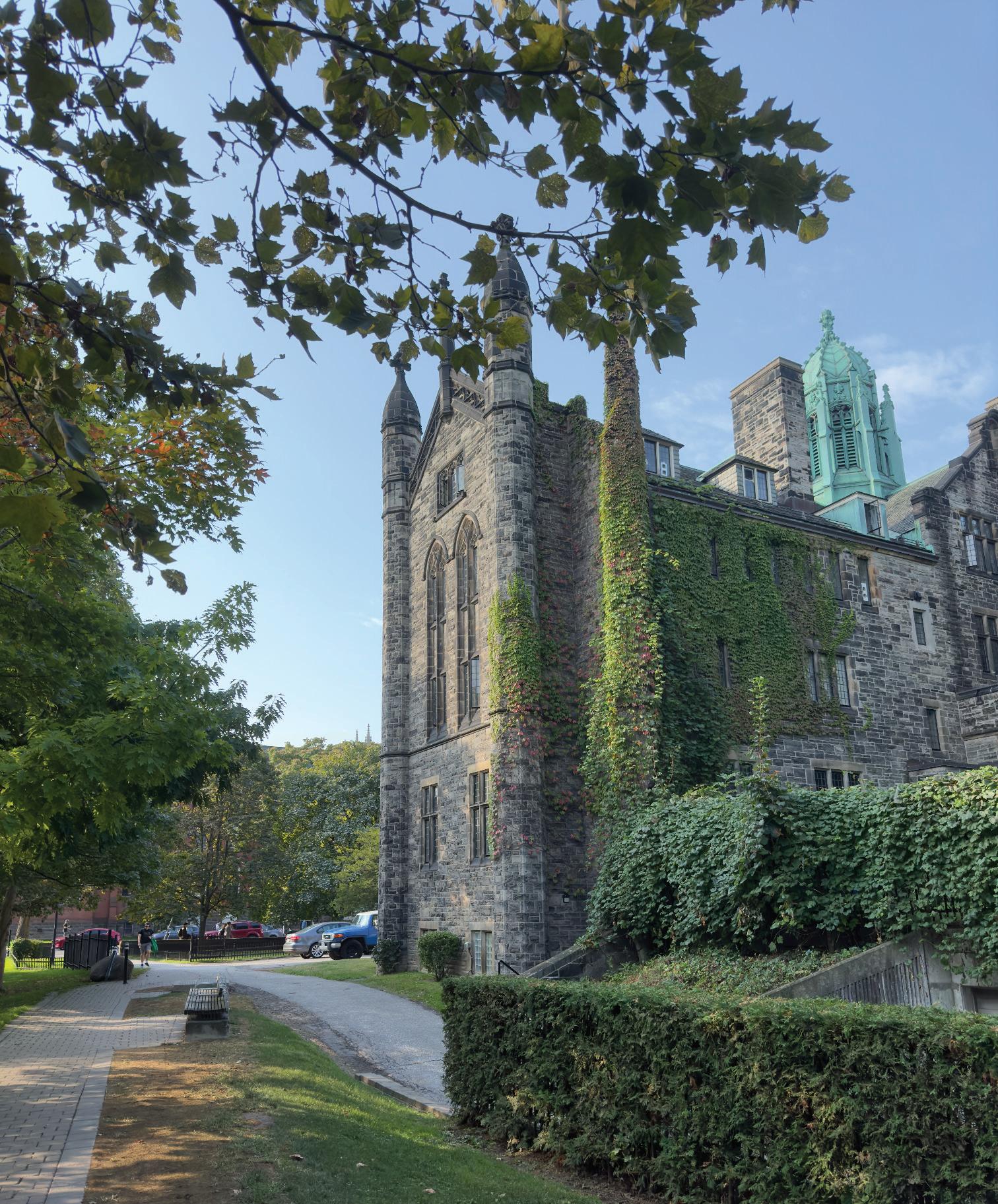
September noon sun glared into my eyes, while a black squirrel darted across the lawn in my peripheral vision. A lifetime has passed since my undergraduate years. Although I remain struck by Trinity College’s beauty (I don’t believe that could ever change!), I’ve evolved from that loud, abrasive, and opinionated teenager who has yet to explore the world.
Today, I am a resilient 30-year-old (non-practicing) lawyer who has embraced multiple roles since graduating from law school in 2017. From freelance legal researcher and Search Engine Optimization (SEO) editor to podcaster and legal document reviewer, my career journey has been a tapestry of unconventional and diverse experiences. However, some things remained unchanged from my undergraduate days: untamable bangs that stick up
all the time and an unwavering passion for writing, analysis, broadcasting, photography, and videography.
As I retraced my former self’s footsteps through Trinity, I contemplated about the transformation I’ve undergone in the past 9 years. After three years of undergrad (I did summer school every year because I wanted to graduate and start my career early), I went straight to law school, where I was forced to face the fact that I didn’t know what I wanted out of life.
Overwhelmed by the rigorous curriculum and the prospect of becoming a lawyer, I sought solace in art, writing, and social media. Although I tried my best, I did not do as well as I thought I would, and I was not able
to land a full-time traditional legal or corporate job after graduation. Depressed, anxious, and overwhelmed, I sank even deeper into the engrossing world of my creative pursuits.
Despite the challenges of an oversaturated job market for new lawyers, I eventually found several part-time jobs over the next few years, including a stint as a freelance legal researcher for Thomson Reuters Canada.
These jobs taught me more about the law and my writing abilities (of which I’ve always been proud). They also left me plenty of time to explore my creative interests because they were primarily contract or freelance. Perhaps they gave me too much time — when I wasn’t working, my mind would go into overdrive, and I would start doubting my future. I developed an even more intense obsession with my interests outside of work hours, causing me to become increasingly isolated. I also struggled with finding purpose in my professional and personal life.
Once the pandemic hit and my jobs went online, I became even more withdrawn and embedded in the digital world. Eventually, crafting intricate social media posts about my original fiction became my daily refuge from reality in 2020 to 2022.
My life during the pandemic was simple, almost too simple: I worked from home for 9 hours a day, had dinner, and then wrote about my stories, drew, or played video games. I was so obsessed with my inner world and work that I started drifting apart from even my oldest friends, and I was too depressed by my derailed law career and seeming lack of prospects to think much about the future.
As far as I was concerned, my life was destined to be boring, and I could do nothing to change that until COVID ended. It was not a good time for me mentally. Looking back, I felt like a shell of my former self. I barely laughed and spent most of my time trying to run away from my feelings of worthlessness.
In December 2022, I decided to do something I would’ve never thought I would do just a few weeks ago: apply to graduate school. My reasoning? I was sick of my self-imposed restrictive lifestyle, and I needed more momentum in my life. Plus, the master’s program would give me external motivation to research a topic of interest to me: the rise of populism in the age of social media disinformation. I did not want to let my negative emotions about my “failed” law career continue controlling me. Even if I still felt horrible about being unable to get a full-time legal job, I knew I had to move on and reconnect with passions that used to drive me.
Since I decided to return to school, I’ve networked with new people, honed my writing skills, and gained the courage to explore new careers and life paths. While the future remains uncertain, I am now willing to face reality and use time more wisely. I still love writing, art, and fiction, but they no longer dominate my life. I’ve also learned important life lessons:
1. Embrace change: Even if things look daunting or scary, you must move forward. If you retreat into comfortable routines, you may shut yourself off from new opportunities.
2. Optimize your time: Use your time wisely to pursue your
goals and enrich your life.
3. Set goals: Setting goals can alleviate anxiety and prepare you for the future, even in the face of uncertainty.
4. Talk to a wide range of people: Broaden your horizons by engaging with a wide range of people.
5. Don’t think about yourself that much. The more you think about yourself and what you should be doing, I’ve realized, the more likely you will feel depressed. In my experience, over thinking can contribute to anxiety.
6. Don’t build your identity around one thing: One of the reasons I felt depressed about my career for so long was because of my strong focus on being a lawyer. I should’ve realized there is more to life than meeting that goal, and that I am allowed to seek happiness even if I don’t have a solid or conventional career path. I was subconsciously hesitating to do things because I thought I should meet my career goals before I could do anything else. All this mindset did was set me up for more disappointments in life.
For the first time in a long time, I look forward to seeing what will happen next year!
Anyone who is familiar with the St. Michael's College campus or has ever passed the corner of Bay and St. Joseph's has surely noticed the unusual sculpture of a towering donkey with its front legs in a pink cast covered with sympathetic messages from passersby. When this quirky addition to our urban campus landscape first ap-
urban campus landscape first appeared in 2019, I felt both amused and, unexpectedly, seen. To me, this cute, injured donkey was a perfect visual representation of my younger undergraduate self: stumbling through emerging adulthood and struggling – not with broken limbs but with my mental health.
My first brush with the University of Toronto (UofT) took place a decade ago. I began my undergrad at Trinity College in September 2012 as a bright young student with a President’s Entrance Scholarship. Only a few years prior, in 2009, my parents and I had immigrated to Canada from Moscow, Russia. Needless to say, changing continents as a fourteen-year-old was challenging. I missed my friends and teachers back home and had to adapt to a completely different culture and education system. Yet I quickly overcame the language barrier and felt as prepared for university as my Canadian-born classmates. What I was not prepared for was my mental health suddenly taking a nosedive.
Don't get me wrong, I did have many amazing experiences in my undergraduate years: studying abroad in Berlin and Brussels, experiencing the delirious highs of first love with a guy from Barcelona whom I met in Europe, making friends and learning from some great professors. However, toward the end of my degree the long-distance relationship with my Spanish boyfriend turned sour, and that painful breakup brought to the surface unaddressed mental health problems that my parents and I had failed to recognize in the preceding years. What we thought was just some typical coming-ofage angst turned out to be a severe case of obsessive-compulsive disor
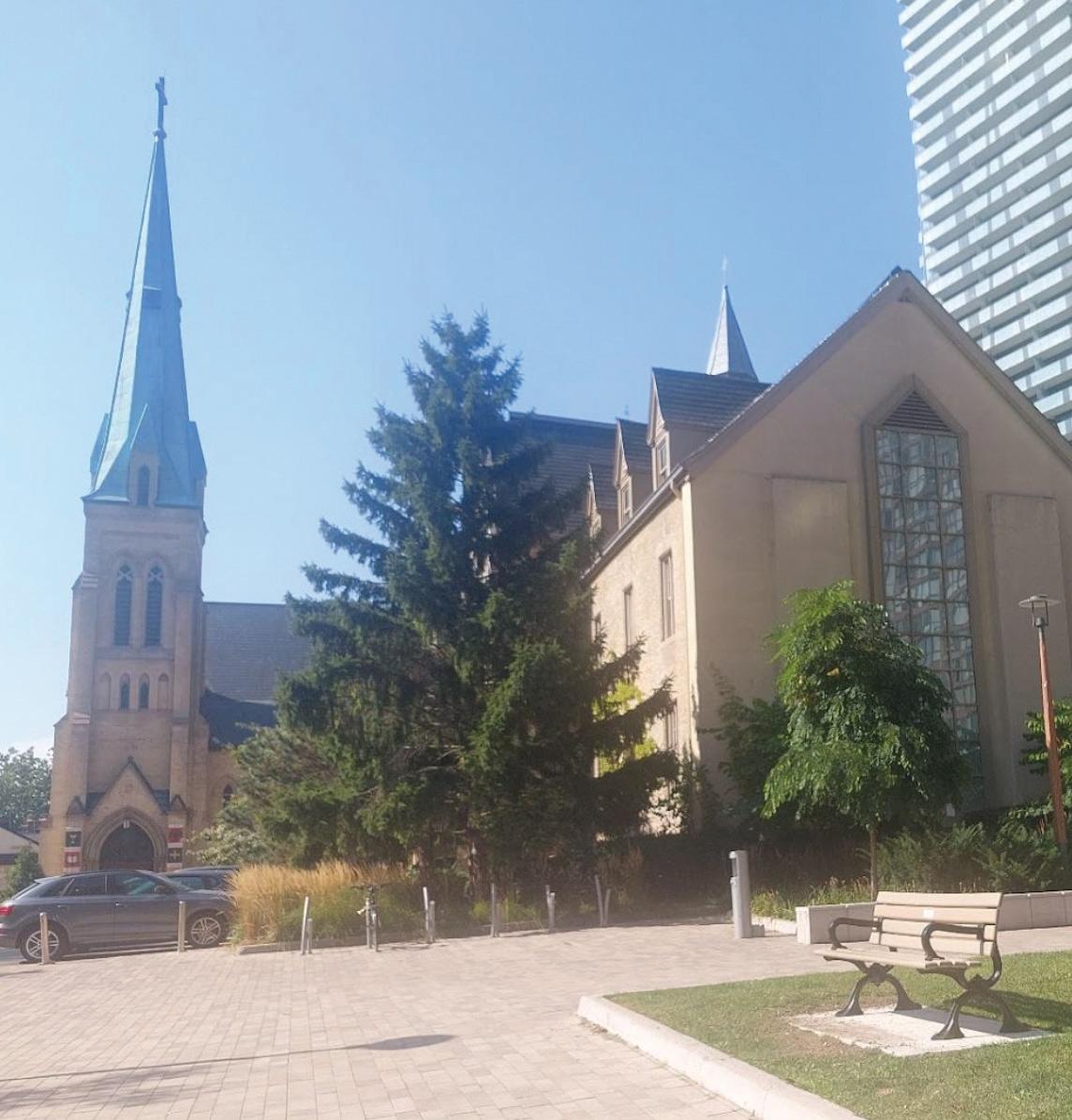
der and so, at the end of 2016, my treatment journey belatedly began.
I will not go into the details of my journey here, but suffice it to say that wrapping up my undergrad was extremely difficult, I never attended Convocation because I was abroad trying to get treatment (instead, I sobbed disconsolately on my friend's shoulder the day I received my diploma), and only in 2019 –the same year the donkey sculpture was installed on campus – did I finally start to get better. I have never blamed the university for any of what happened to me; on the contrary, I am very grateful for the support I received there in the last couple years of my degree when the going
got tough. It is hardly surprising, though, that, in light of my traumatic early twenties, I wanted to leave my UofT chapter firmly in the past.
After I began to recover, I spent three years teaching at various private schools around the city. Working with children and teens, feeling valued, and even surviving the pandemic years of remote teaching as a young educator gave me a great sense of satisfaction and self-efficacy. I was once again feeling happy and in control of my life, and I even dipped my toes back into the dating pool, eventually meeting my now-fiancé. Things were definitely looking up and yet, I was not quite fulfilled. As much as I enjoyed teaching

French and social science, I knew I still had a lot of my own learning to do if I were to live up to my full potential. I needed to go back to school.
There are two schools of thought on returning to a place where you have once experienced trauma. One says that you should avoid it like the plague so as not to trigger painful memories. The other encourages you to go back there and make new positive memories that will overlay and eventually displace the old bad ones. When I was offered admission to the European and Russian Affairs Master’s program (MA) at the Munk School, I had to face that dilemma. Should I say yes to this amazing op-
portunity and face daily reminders of my less-than-rosy early twenties? Or should I stay away and perhaps get a fresh start somewhere else?
As one can guess from seeing my article in this magazine, I chose to pursue graduate school at UofT, and it was one of the best decisions I have ever made. I am now in the second year of my MA and am thinking of completing a PhD. I absolutely love the program, I am keeping up my teaching practice through TAships, and thriving in the very place I was once struggling has been incredibly therapeutic and important for my recovery. There is nothing more healing than proving to yourself how far you have come, how much you have grown, and how resilient you have become. Just like learning, my mental health recovery is a lifelong journey, and I still work hard at it every single day. I know many young people who can relate to this. My advice to anyone who has gone through similar challenges is not to run away from the past. As Socrates (the fictional character in Dan Millman's book Way of the Peaceful Warrior, not the ancient philosopher) said, "The secret of change is to focus all of your energy, not on fighting the old, but on building the new." We are all a little like that cute lost-looking donkey in a pink cast, but casts are temporary. Our hardest days often lead to our greatest triumphs. Keep writing your story.
Embarking on a direct PhD in engineering in Canada, away from home, presented unexpected challenges. The relentless pressure of research and coursework led to sleepless nights and pan-
ic attacks, compounded by a deep sense of homesickness. At times, I felt disconnected and burned out, questioning my purpose here.
In this struggle, I found solace and strength in three pivotal strategies. First, I prioritized spending time outdoors and with friends, breaking the isolation of academic life. Second, I rediscovered painting, a forgotten hobby from my home country, which became a therapeutic outlet for my emotions. Lastly, engaging in entrepreneurial events rekindled my motivation and connected me with inspiring individuals. These experiences were not merely coping mechanisms but vital lessons in resilience and mental health. They underscored the importance of balancing academic pursuits with activities that nourish the soul.
To anyone navigating similar challenges, remember the power of hobbies, community, and self-care. Your journey is unique, but you don’t have to walk it alone. Prioritize your well-being and find joy in the pursuits that light your path. This story is a reminder that amidst the pressures of academia, finding balance and embracing our passions can lead to true resilience and fulfillment.
A collection of stories and experiences from graduate students at our university.
There was a time in my life where for some reason, all the joy left. I have heard the words "being in a dark
place", but I must admit I did not understand it until I felt it myself. It actually felt like everything in my life was being experienced through a filter that made everything dark and heavy. I did not know what to do at that time. I had always heard about reaching out, but I did not feel comfortable sharing these feelings with others. Actually, the hardest part is that I did not understand the feelings, or why, or how I got to that point, so it was difficult to share. At that time, my partner was trying to help as much as possible, and they recommended just checking out some assistance programs. I did not feel comfortable talking with someone face to face, and at the time I felt too overwhelmed with other things (work, life, school) that I did not feel I had the time to go to counselling.
So instead, I mustered up the guts to use the online assistance program, which allowed me to communicate with a professional through email, which I found was the easiest thing for me. It almost felt like I was writing for myself, but getting feedback and support from someone who could help. This person guided me and helped me understand my feelings, and eventually I was comfortable and feeling better enough to talk face to face with someone. And this has been the best decision in my life (cliche, I know), but this helped me gain coping skills that I have used throughout, including the ability to reach out again when I felt similar feelings. If you ever feel like this, I remind you, you are not alone, and I send you all the strength and support to make that one phone call, that one email, or to reach out that hand and say " I am not ok, I need help". I promise, someone is there looking for that hand, and will help you.
Throughout my upbringing, I lacked a clear understanding of what a healthy relationship entailed. Witnessing my parents' separation when I was merely five years old set a precedent. As my mother remarried, her new husband grappled with fidelity issues and battled alcoholism. Consequently, I grew up devoid of faith in love and devoid of comprehension regarding boundaries.
My initial romantic relationship mirrored the turbulent dynamics I witnessed at home, marked by
emotional and physical abuse. In hindsight, I wished I had recognized the warning signs sooner. However, when I finally received assistance from a local agency, my self-esteem had already plummeted, leaving me feeling directionless and vulnerable, ultimately returning to the arms of my abuser.
Upon earning my undergraduate degree at the age of 21, I experienced a sense of empowerment and newfound awareness of alternative paths. Yet, I remained ensnared in emotional manipulation, with my partner threatening self-harm if I dared to leave. Trapped in this

toxic cycle, I reached a breaking point during a violent altercation when he hurled glass at me. It was in that moment that I resolved to sever ties for my own safety, realizing that the cycle had to end.
Now, on the brink of graduating with a Master's Degree in Social Work, I reflect on my journey. Despite the darkness of my past, I found purpose in assisting women in my community who faced domestic violence and educating adolescents on healthy relationships. My story underscores a crucial truth: the power to create change resides within oneself. Despite the

hardships endured, I discovered that by unlocking my own potential, I could break free from the chains of abuse and start anew. Through resilience and determination, anything is achievable.
“We are all made of stories.”
I’ve been struggling for a long time with PTSD. In university I started to realize that my abusive family home was not the norm, and then I was sexually assaulted in my first year. I had a really hard time keeping my grades up afterwards and I was out of school for five years before beginning my master’s degree. In that time I struggled with abusive relationships and my self esteem. I’ve been chronically underachieving for the last ten years to avoid the fear of not being good enough.
Last fall I started doing everything necessary to work towards my career again, even if it burned with embarrassment or agonized me with shame or overwhelmed me with the fear of rejection. I just did it anyway, and then gave myself a hug and took another step forward. It's the hardest thing I've ever done. Some days it is really difficult to honour my feelings and let them out in a healthy way, and to come to terms with the fact that I will be doing this management for a long time, maybe life-long. It’s hard to focus in class and some days the work feels overwhelming and confusing.
I’m afraid to state my ideas and afraid of disapproval. But the most helpful thing I did this term was talk to my program head and professors when I started to struggle with the course load. I also started counselling through U of T’s disability services, with a focus on managing my feelings about receiving criticism and to let go of perfectionism.
I think that when I learn to get out of my own way, it will be even harder for any person, circumstance, or any other set back to break me down again, because I have already climbed a mountain. You are different from me and I can’t advise you. I’m just here, sitting beside you with my story, on a similar mountain.
Edited by Ami Patel & Talia VaccaThank you to GradMinds and all of the amazing students who shared their stories.
The following is based on an interview conducted with Professor Jane Freeman, the founding Director of the School of Graduate Studies’ Graduate Centre for Academic Communication (GCAC) at the University of Toronto. A Senior Fellow of Massey College and a member of the Stratford Festival’s Senate, Jane’s areas of expertise are Shakespeare, classical rhetoric, and oral and written communication. In 2023, she was awarded the highest honour for teaching at the University of Toronto, the President’s Teaching Award.
Q: Can you talk about your position relative to graduate student experience and student wellness?
I am a Director of the GCAC, so I have had the chance over the years to work with hundreds of Master’s and PhD students on their academic writing and speaking. I often see students in stressful situations, such as when writing their first assignment in graduate school, writing grant proposals, preparing for a dissertation defense, a job talk, or a comprehensive exam.
You ask me about my experience with graduate students and mental health. I think it’s important to state right up front that I’m not a mental health expert. Mental health experts have vital and very different training

Jane Freeman, director of the Graduate Studies’ Graduate Centre for Academic Communication
than I have. At the GCAC, we often see students who feel discouraged, overwhelmed, or stressed, because those feelings sometimes come up when students are struggling in isolation on their writing, and we understand the importance of helping students find support from a mental health expert if that’s what they seek.
Q: Are there any parts of grad school that are particularly isolating or potentially challenging for students?
In working with graduate students,
I’ve noticed three times when many students face the challenge of going through a major transition:
First, when students enter the largely independent world of graduate school from the largely dependent world of undergraduate studies. There is an inherent change in the nature of work that graduate versus undergraduate students undertake: much undergraduate work takes place in groups, as students prepare for exams and write essays/reports on the same topics, while much graduate work takes place alone as students pick their own topics and conduct their own research.
Second, when graduate students finish their coursework and “achieve candidacy.” When PhD students complete their coursework, they move even further into solitary work as they leave classroom learning behind and start writing their dissertations alone. The skills needed to write productively and confidently in isolation aren’t skills many students have previously had the chance to develop; those skills take time and choice to cultivate.
Third, when students see graduation coming and prepare to leave their lives as a student. By the time students complete a PhD, they’ve been in school for a long time, and being a student has been part of their

Image source: https://www.sgs.utoronto.ca/
identity. Often, students graduate without certainty about what’s coming next, and that can cause anxiety.
These times of transition can bring challenges, but they’re easier to navigate if students realize they’re not alone, support is available, and (most important of all), they’re stronger and more resourceful than they knew they were.
Q: In recent years, what significant changes may have impacted students’ well-being from your point of view?
During the COVID-19 pandemic, many people adapted to doing things online. While this has made things more efficient, it has further increased the already potentially isolating work of graduate students.
When working from home, students risk missing out on the natural social connections that were available before the pandemic, such as meeting colleagues in the lounge, chatting after class, having lunch together in the cafeteria, or working out at the gym. These casual interactions help students get out of their heads and into their bodies, and remind them they are not alone. They also
sometimes lead to new friendships and unexpected research ideas or collaborations.
At GCAC, we’ve been trying to offer more in-person classes and workshops because we know the power of bringing students together both to learn with and from each other and to help them realize they are all struggling with similar challenges. We haven’t had nearly as much uptake for in-person classes, I think, because students think it’s more efficient and convenient to work from home, but if increased isolation causes people’s writing to get stuck and their confidence to get shaky, then coming to campus to learn in the company of others can actually be a far more efficient means for students to move their writing forward.
Q: What role may artificial intelligence play in graduate students’ experience with well-being?
I’m no expert on AI, and AI is very new, so I can only discuss my concerns. My primary concern is that overreliance on ChatGPT could interfere with students’ doing the hard work to develop their own expertise and essential skills, which could, in
turn, lead to lower self-esteem and confidence.
Let me give you an example: I ran a workshop recently on academic writing and ChatGPT. One of the students asked: could you tell us how to use ChatGPT to write a literature review? This question made me very concerned because a literature review isn’t just a string of words summarizing various articles. Writing an effective literature review requires researchers to become deeply familiar with the research in their field as it relates to their own specific work. It’s a slow process that involves developing real expertise, which takes time, but it’s also the foundation on which original research can be built.
When reading through the literature, you learn what people have done, what they haven’t done, and who disagrees with what. Ultimately, building expertise allows you to join scholarly conversations with expertise and confidence, whether it’s in a casual chat in your department lounge, a discussion with your supervisor, a chapter of your thesis, or when answering questions in a job talk.
A student who sees a literature review as a product to hand in, and relies on Chat GPT to generate such a product, leaves themself dependent on external intervention and without the knowledge needed to speak and write with the confidence of an expert.
Q: Some grad students feel stuck in a rut, especially if they aren't having good luck with their job searches. Do you have any suggestions for how they can maintain positivity?
Graduate students are specialized, and specialized jobs take time to find. People with specialized training often experience a period of uncertainty and unstable employment, such as short-term contracts, as they look for jobs well suited to their specific skill set. It’s not very common for the right job in the right place to become available just at the right time.
I’d encourage students to recognize that lots of people (myself included) move once or twice and go through a series of finite jobs as they look for a permanent job. I’d also encourage students not to lose their nerve. The fact that navigating the job market takes time is not a reflection of your value as a highly skilled and worthy candidate.
Q: What does resilience mean to you?
I find resilience a sort of unhelpful word. To me, it sounds like “tough it out when the going gets hard,” but it’s reactive rather than proactive.
For me, resourcefulness is a more helpful concept. Resourcefulness to me means that when I face a challenge – whether a writing problem like writer’s block or a physical issue like a stiff neck after too long at the computer – I know how to help myself. Rather than feeling reliant on external help (like waiting for an appointment with a massage therapist to relieve a sore neck), I know that swimming, or certain yoga moves can help me help my own neck. It’s like the power to address the problem has gradually moved from outside me to inside me.
That same feeling of growing self-reliance can also be experienced related to our writing, or to our disci-
plinary expertise. In several of our courses in GCAC, we aim to help students develop a sense of resourcefulness in their own writing process. Even experienced writers get stuck in their writing sometimes, but experienced writers know how to help themselves get unstuck: they feel resourceful in the isolation of their office. They are in touch with their own sense of agency.
As a young student, I didn’t have expertise in my field, so I relied on my teachers to learn the answers. But as my expertise has deepened, I’ve gained confidence in my ability to find answers to my own questions. That feeling of growing expertise is a form of resourcefulness: I’m better able to answer my own research questions now, and part of developing expertise is knowing what I don’t know and when I need to seek expertise beyond my own.
A sense of personal resourcefulness can also help us cope with challenging times. If we’re in touch with how we’re feeling, and we feel some confidence in our ability to help ourselves, we can consider whether what would be most helpful today would be an uninterrupted work day to catch up, or going for a swim to give our body a break from the computer, or reaching out to others for guidance, or social contact.
A growing sense of resourcefulness is something I would wish for all of my students, for knowing deep down that you can count on yourself makes the journey of graduate school – and of life – much more manageable and enjoyable.
Edited by Ami Patel & Talia Vacca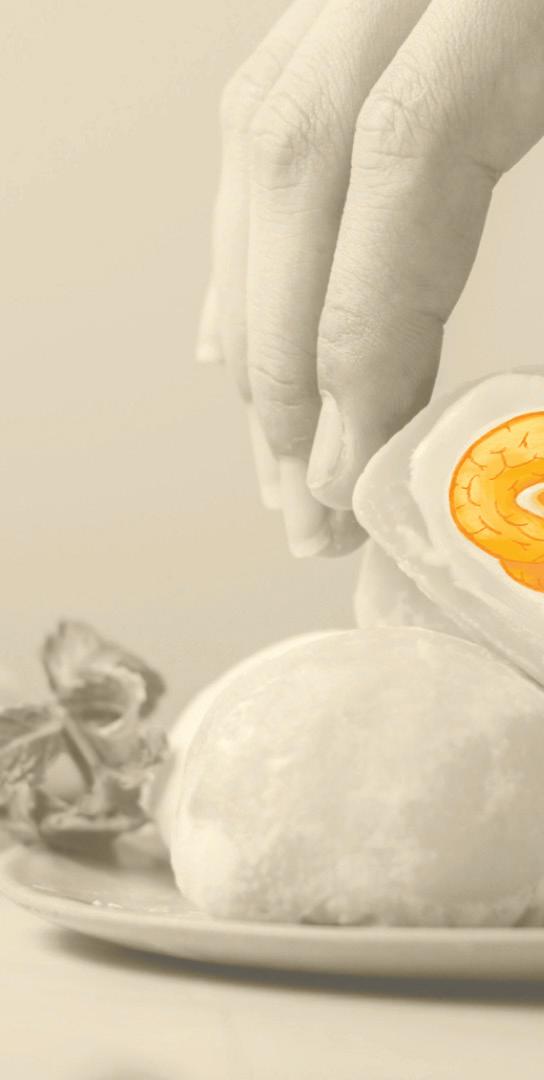
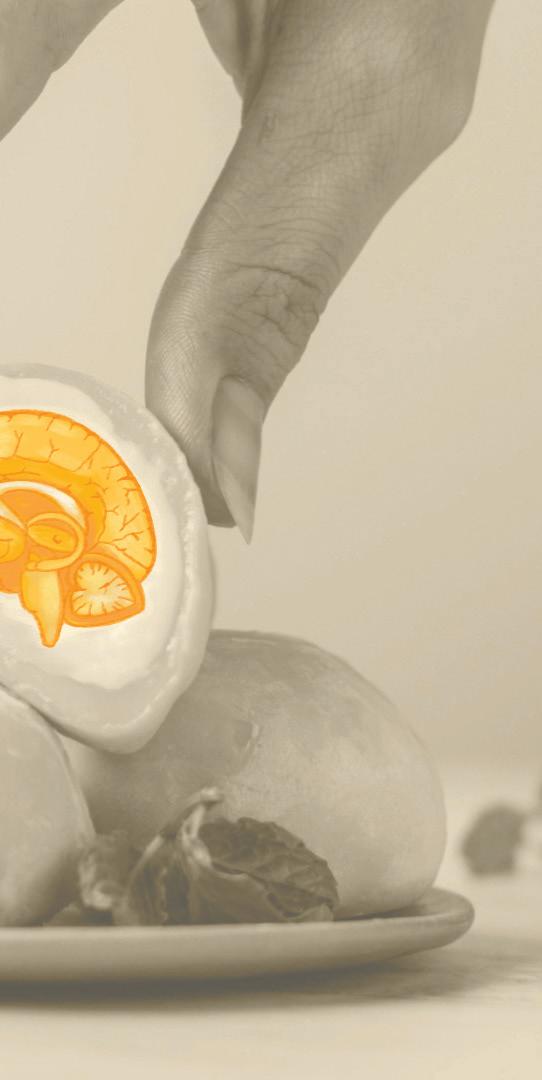
Ihave a mochi mind. Mochi is a yummy Japanese rice cake that is made from starchy glutinous rice. The traditional method of making mochi is by steaming the rice and repeatedly pounding it into a paste and molding it into a desired
shape and texture. Just like the glutinous rice, I have been beaten up and broken down several times over the course of my life. It got to the point where I did not expect anything else from the world. I felt like I did not deserve anything better. Turns out, my mind has simply been “mochified” and that the final product of my brain is elastic, resilient, and as beautiful as any other.
This article is about trauma, specifically about complex trauma and complex post-traumatic stress disorder (C-PTSD).
Before delving into this, it is important to recognize that terms for psychological disorders and the psyche are tools to understand the human experience and to determine next steps for treatment. The formalization of disorders such as PTSD, clinical depression, and anxiety, are useful to support systems of care, but it is not the ultimate source of description for the human experience. It is not possible to fully capture the mind and all its possible states in one document. The current version of the Diagnostic and Statistical Manual of Mental Disorders (DSM) is in its fifth revision, which goes to show that our understanding of the human psyche changes and is limited. For example, the first
edition of the DSM included homosexuality as a “sociopathic personality disturbance” … and thankfully it has been removed since 1 .
Post-traumatic stress disorder (PTSD) is a set of symptoms related to a traumatic experience. The DSM and other similar formalizations such as the International Classification of Diseases (ICD-11) list a very rigid and concrete set of criteria in order to be diagnosed with PTSD. This provides a framework to plan treatment and next steps but can be a barrier to access to some forms of treatment. In these criteria, the “trauma” is defined as an event that threatens a person’s life, causes physical harm, and/or involves sexual violence. This could include experiencing a natural disaster or a car accident. To be classified as PTSD, the collective group of symptoms must be explained as being related to that traumatic experience. For example, a person may experience intrusive thoughts such as flashbacks or nightmares of that event. A person may also be engaging in avoidance behaviours such as refusal to drive a car following a car accident.
Complex PTSD (C-PTSD) is a related condition but has some significant differences that may explain the inability of a person to respond
to classical treatments for PTSD. It is listed in the ICD-11, but it is not listed as a separate condition in the DSM and has thus not been widely recognized by many as a real condition. This reliance on formal recognition can be quite invalidating for those who are simply seeking ways to explain and treat their pain and struggles. C-PTSD is however gaining more recognition with increased awareness as more cases are being reported and suitable treatments are being shown to be effective 2
C-PTSD differs from PTSD in that the set of symptoms are related to several or recurring traumatic experiences (physical abuse, emotional abuse, sexual abuse, and/or neglect) over a prolonged period of time. Oftentimes, it is associated with chronic trauma that began in childhood, i.e. people who have experienced several adverse childhood experiences (ACEs). As a result of constant and repeated trauma, the brain develops or is rewired to cope with this baseline.
Many symptoms of C-PTSD overlap with PTSD-related symptoms, including depression and anxiety. Several symptoms however cannot be mapped back to a specific traumatic event. Additional symptoms of CPTSD include those of a behavioural nature, such as relationship problems, poor self-esteem, uncontrollable anger and sadness, or mood instability. At the core, C-PTSD is characterized as having a hardwired fractured sense of self.
In PTSD, we may see a shift in personality after the event, in C-PTSD the personality hasn’t even had a chance to develop naturally to its full potential. In C-PTSD the parts of the self that hold the trauma, memories,
pain, and emotions, are fractured (i.e. dissociated or “exiled”) from the core and the remainder of the self becomes dedicated to survival/coping mechanisms, keeping the exile in check, and maintaining a normal life. Throughout development, the brain dedicates less room for growth and for the discovery of oneself as a whole being.
For me, I found that I had trouble expecting kindness as a default from other people. I expected hostility and violence wherever I go. I learned that I was always the problem, and that I should be ashamed of taking up space. I learned that I must work to deserve my place in this world. I was stuck in a cycle of dysregulation and mitigation for this dysregulation (i.e. “firefighting”). I experienced “emotional flashbacks”, where I did not have active memories of the traumatic experiences, but rather I was trapped in the feelings of dread, fear, anxiety, sadness, or rage.
In PTSD there may be some identifiable and well-defined triggers; in C-PTSD the brain is triggered even more subconsciously. In both, survivors always feel like they are in battle, even when they are objectively safe.
When I escaped from my situation and found a soft place to land, I still had my internal struggle. I felt that no one could hurt me as badly as my own mind could because at least now I can walk away from the danger, but I cannot walk away from myself. I had to train myself to believe that what happened was never my fault, it was never my fault that I didn’t feel good enough to live, and it was never my fault that my needs weren’t met. It was the world that failed me, and it is so unfair that I am the one
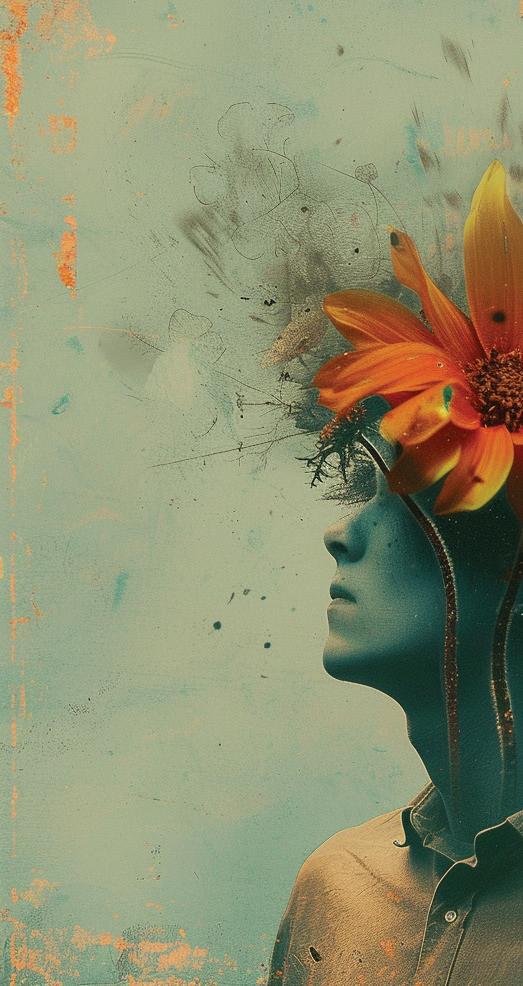
who must do the work of healing. This work involves “reparenting” the self and learning how to get out of an emotional flashback by doing the next right thing in the moment. The healing process involves building sustainable routines to set yourself up to live your authentic self. The goal of therapy is to discover and to connect with your true self; to be present and aware of the world around you without hypervigilance.
There is plethora of resources to learn about the nature of trauma and how to heal from it. These include authors such as Pete Walker, Bessel van der Kolk, and Richard Schwartz. Various therapeutic interventions have been widely employed to various degrees of
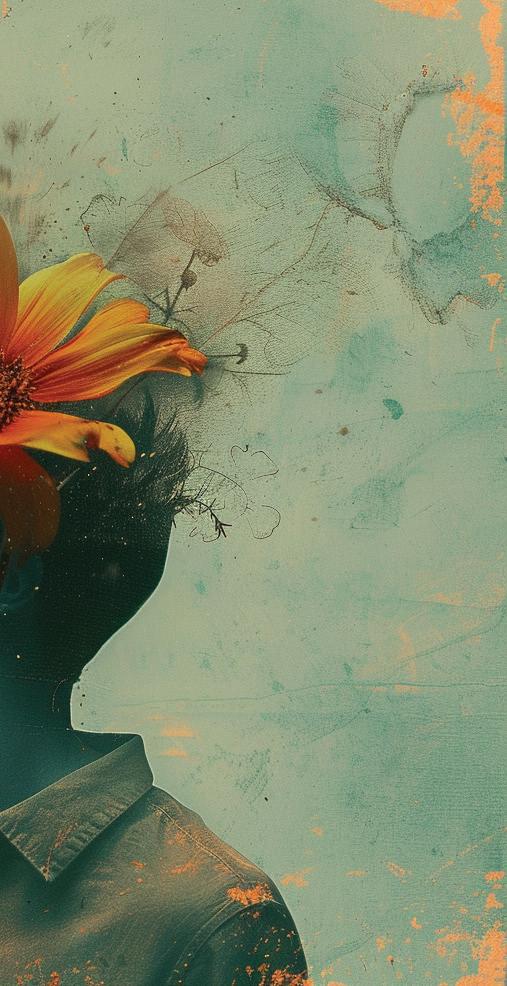
effectiveness. This includes Eye Movement Desensitization and Reprocessing (EMDR) therapy and exposure therapy, which are recognized as the classical treatments for PTSD. For both PTSD and C-PTSD, cognitive processing and psychosomatic brain remapping can be effective. Particularly for C-PTSD, dialectical behavioural therapy (DBT) has been proven to be effective in rewiring some of the internal narratives of shame, worthlessness, and hostility towards and from others.
For me, I found the Internal Family Systems (IFS) therapeutic model to be pivotal in my healing journey 3. I was able to see myself – all of myself –as a whole system of parts that work together to keep me alive and safe. I
was able to see the parts of myself that work tirelessly to prevent me from perceiving the parts of me that feel pain, the parts of me that are stuck in childhood, hiding from the dangers of the outside world. I was able to see how I was able to get this far and how I was able to navigate this hostile world having been dealt an unfortunate set of cards. I was also able to see the parts that I thought were “problematic” and even “evil”, and saw them as extensions of me, born out of necessity to keep me safe and to keep my system functioning.
The IFS model works to delineate parts, including “managers,” “firefighters,” and “exiles”. The intent of keeping exiles exiled is to separate you from the pain that the exile holds, so that you can move on in life without feeling the burdens that the exiles have. Of course, trauma is stored in the body as much as it is stored in the psyche, so the pain of the exile and the emptiness (for exiling a part of you) is felt eventually. The protectors, particularly the "malevolent" ones, only know what has worked for them in the past, which was by exiling the part that is seeking your attention and by distracting you. This involves pushing the exiles back, telling the exile all the terrible things that will keep it feeling worthless, inadequate, broken, undeserving, etc., and influencing you to take action that would minimize the triggering of the exile so as to keep you and the exile dissociated.
In all this work, I am slowly working on building a stronger relationship with myself, leading with compassion and love at the core. I am learning to believe that I am not worthless after all. I am simply human, with both flaws and strengths. This perspective allows
my brain to feel connected to other humans, thus activating compassion that I can use towards myself.
It's hard to self-assess health especially when it comes to mental health, which is why it's better to work with someone with an objective perspective (i.e. a trusted therapist or psychiatrist). The key is to work with them instead of simply going to someone and expecting them to "fix" you. You are the one in control of yourself and your experience at the end of the day, and you get to decide what parts of treatment and self-discovery to explore. Waking up and fully feeling life can be overwhelming and destabilizing; it is important to be careful and to start this healing journey slowly and thoughtfully. It is so incredibly painful to grieve the past, especially when the grief debt is too high. But I promise, it is worth it to be able to experience and interact with the world as your full, authentic self.
Edited by Sophia Liu & Lola LevingReferences
1. Drescher, J. “Out of DSM: Depathologizing Homosexuality”. Behavioural Sciences 2015, 5, 565-575.
2. Maercker, A. et al. “Complex Post-Traumatic Stress Disorder”. Lancet 2022, 400, 60-72.
3. Schwartz, R. “No Bad Parts: Healing Trauma and Restoring Wholeness with the Internal Family Systems Model”. Sounds True Publishing 2021. ISBN: 978-1683646686.
4. Walker, P. “Complex PTSD: From Surviving to Thriving”. CreateSpace Independent Publishing Platform 2013. ISBN: 9781492871842.
5. Van der Kolk, B. “The Body Keeps The Score: Brain, Mind, and Body in the Healing of Trauma”. Penguin Books 2014. ISBN: 9780-14-312774-1.

Throughout our lives, stress has become an unwelcome companion for many of us. The demands of work, academics, and responsibilities easily take a toll on our mental well-being. Amid this chaos, the practice of stress reduction techniques has provided a way to address mental health and as an alternative to pharmaceuticals. In this article, we delve into the science of yoga on lowering stress levels, enhancing focus, and fortifying emotional resilience as well as how we can incorporate this mindbody practice in our daily lives.
Stress is the body's way of reacting to challenges, like a signal that tells your body to be alert and ready for action.1 When faced with a stressor–whether it is an upcoming deadline or a challenging situation–the body releases hormones like cortisol and adrenaline and initiates neurological changes to prepare you for the situation; this is known as the “fight or flight” response. This is a normal and helpful response; however, too much chronic stress can harm both your mental and physical health.1 Therefore, learning how to han-
dle stress is important for keeping your body and mind healthy.
Yoga, an ancient mind-body practice, provides a holistic approach to stress reduction.2 The science behind yoga’s role in stress is its ability to trigger the relaxation response, a physiological state opposite to the stress response. When engaged in yoga, the body activates the parasympathetic nervous system (often called the "rest and digest" system). This activation decreases heart rate, blood pressure, and
cortisol levels, promoting a sense of calm and well-being.2,3
The physical postures (asanas) and breath control (pranayama) in yoga serve as key elements in initiating the relaxation response.2 Asanas, ranging from gentle stretches to more challenging poses, fosters a mindful connection between the body and mind. The deliberate and controlled breathing patterns in pranayama further enhance this mindfulness,2 serving as a bridge between the physical and mental aspects of stress reduction (hence, why yoga is known as a mind-body practice).
Scientific studies examining the impact of yoga on stress hormones consistently show a reduction in cortisol levels.4-6 Cortisol, often elevated during stress, contributes to various health issues, including impaired cognitive function and weakened immune responses. Yoga's ability to lower cortisol levels provides a physiological basis for its stress-relieving effects, improving mental health and well-being.
Beyond its role in stress reduction, yoga has been linked to improved focus and attention.7 The mindfulness cultivated during yoga practices influences daily cognitive function. Research suggests that regular yoga practice enhances cognitive performance by promoting neuroplasticity (the brain's ability to reorganize and form new neural connections).6-8 As the
mind becomes more adept at staying present and focused on the current moment, we become less prone to distractions and cognitive resilience improves.
As we unravel the science behind stress reduction through yoga, it's essential to acknowledge the accessibility of this practice. How can we fit yoga and other stress-reduction techniques into our already busy schedules? Integrating yoga into daily life doesn't necessarily require lengthy sessions; even short, consistent practices can yield profound benefits. Individuals can begin their yoga journey by attending local classes, following a 5-minute online tutorial, or exploring free mobile apps.
“Scientific studies examining the impact of yoga on stress hormones consistently show a reduction in cortisol levels.”
In conclusion, the science behind stress reduction techniques, particularly yoga, bridges ancient wisdom with modern neuroscience in health and well-being. As we embrace the mindful movements and conscious breathing, we are activating an intricate interplay between body and mind, fostering a state of balance and resilience. So, roll out that yoga mat, breathe, and flow— it's not just a physical exercise;
it's a journey towards a more stress-resilient and mindful life.
Editedby Paul Jerome Gamueda & Talia Vacca
References
1. Chu B, Marwaha K, Sanvictores T, et al. Physiology, Stress Reaction [Internet]. StatPearls Publishing. 2022. Accessed 2023 Dec 20. Available from: https://www.ncbi.nlm.nih.gov/books/ NBK541120/
2. Woodyard C. Exploring the therapeutic effects of yoga and its ability to increase quality of life. Int J Yoga. 2011;4(2):49-54.
3. Bringmann HC, Berghöfer A, Jeitler M, et al. Meditation-Based Lifestyle Modification in Mild-to-Moderate Depression: Outcomes and Moderation Effects of Spirituality. J Integr Complement Med. 2023.
4. Elstad T, Ulleberg P, Klonteig S, et al. The effects of yoga on student mental health: a randomised controlled trial. Health Psychol Behav Med. 2020;8(1):573-86.
5. Lemay V, Hoolahan J, Buchanan A. Impact of a Yoga and Meditation Intervention on Students' Stress and Anxiety Levels. American Journal of Pharmaceutical Education. 2019;83(5).
6. Tripathi MN, Kumari S, Ganpat TS. Psychophysiological effects of yoga on stress in college students. J Educ Health Promot. 2018;7:43.
7. Kauts A, Sharma N. Effect of yoga on academic performance in relation to stress. Int J Yoga. 2009;2(1):39-43.
8. Puderbaugh M, Emmady PD. Neuroplasticity [Internet]. Treasure Island (FL): StatPearls Publishing; 2023. Accessed 2023 Dec 16. Available from: http://www.ncbi.nlm.nih.gov/books/ NBK557811/
Life as a grad student can be stressful. Between a constant flurry of readings and assignments, professional commitments, and personal life, it is easy to find oneself more than a little frazzled. Unfortunately, the natural challenges that come with graduate studies can be needlessly exacerbated by counter-productive thinking styles (also known as cognitive distortions). Below you will find an overview of the most common unhelpful thinking habits with grad school-related examples, as well as some strategies for addressing these negative thought patterns.
All-or-Nothing Thinking:
The tendency to think in extremes and see things as either black or white. All-or-nothing thinking often includes words like "always," "never," or "I'm the only one."
Example:Iwillnevercatchupon allthisreading.I'mtheonlyone whoalwaysneedsextensionson assignments.
Unfair comparisons:
If you have unattainably high standards and focus primarily on the few people who meet those standards, you will constantly find yourself inferior in comparison. In the age of social media we tend to magnify the achievements of others and minimize our own.
Example: Iwillneverbe aserudite andwell-spokenasmyprofessors. Herlifeseemssoeffortlessand put-togetheronInstagram!Why can'tIbemorelikeher?
Mind-reading:
Making assumptions about what others are thinking.
Examples:Theprofessornow thinksworseofmeformakingthat mistakeduringclassdiscussion. Nobodyfoundmypresentation interesting.
Personalization (Self-absorption):
Interpreting a potentially unrelated event as something negative to do with you.
Example: My thesis supervisor cancelled our monthly meeting. She must be disappointed in me after reading my latest draft.
Fortune-telling:
Predicting negative future outcomes without enough evidence.
Example:Iwillnevermanageto finishmydissertation.Nobodywill givemeareferenceletteronsuch shortnotice.
Negative filter:
Discounting the positive; only noticing the bad stuff and disregarding the good things you have going
for yourself.
Example: I did very well on this assignment, but it doesn't really matter because I am now behind in my other courses.
Emotional reasoning:
Believing that something is true just because it feels true.
Example:Ifeellikeatotalimpostor inthisunbelievablybrightcohort, soIdon'treallybelonghere.
Catastrophizing:
Blowing things out of proportion and imagining the worst possible outcome.
Example:It'snouseaskingforan extensionatthispoint.Iwillonly discreditmyselfassomeonewho can'tmeetdeadlinesandgetazero anyway.
Labelling:
Our harsh judgmental evaluation of the self sometimes leads us to putting ourselves down.
Examples:Thiswasreallystupidof me.Iamsoscatterbrained.
“Should” statements:
Putting pressure on ourselves by an endless list of the things we should be doing. Thoughts with "must," "have to," and "ought to" fall into

fall into this category as well.
Examples:Iamnotgoodenough atthis.Ishouldreadmore,know more,andwritebetter.Ishouldbe thetypeofpersonthatgetsA'son allassignments.
We all fall prey to one or more of these "thinking traps" from time to time. Fortunately, though, we don't have to stay stuck in unhelpful loops of negativity and rumination! Here are a few science-backed strategies to help tame negative thinking:
1. Challenging maladaptive thoughts
Ask yourself:
• Is this thought helpful right now? Is there a more advantageous way of looking at this?
• Is it true? What is the evidence for my thought? What is the evidence against it? Which is more convincing?
• Is my thought logical? Is there a more rational way of looking at this? Could there be another explanation?
• So what if the content of my thought was right, and my fears came true? Could I live through it? Would it really change the big picture of my life? Would I still care about it in a few years' time?
• What's the best thing that could happen?
2. Self-compassion
What would you tell a friend in this situation? Would you reprimand
them or support them? Would you be harsh and demeaning or gentle and comforting toward them? Treat yourself the way you would treat a very dear friend who turned to you for help and advice. What is the kindest thing you can do for yourself right now?
3. Cognitive defusion
Cognitive defusion is seeing thoughts and feelings for what they are (mental streams of words, passing sensations), not what they say they are (dangers or facts). It helps us "unhook" from unhelpful thoughts rather than stay "fused" with them.
Reframeyourunhelpfulthoughts byacknowledgingthemforwhat theyare—justthoughts.
Example: I'm not good enough. → I'm having the thought that I'm not good enough. → I'm noticing that I am having the thought that I am not good enough. Note the increase in separation relative to the original thought in each of these sentences. Creating this distance between yourself and the thought can reduce the problematic thought's power over your feelings and its influence on your behaviour.
Sayyourthoughtoutloudinasilly voiceorsetittoafunnytune.
Remember how Professor Lupin taught his students to deal with boggarts? You can tame your anxious thoughts by trying to view them in a humorous or ridiculous light.
Practicemindfulness.
Try to pay non-judgmental attention to your present-moment experience without getting caught up in thoughts about the past or the future. Engage your senses: take in the sights and sounds around you, explore the texture of your clothes, the feeling of your feet on the floor, the taste and smell of the coffee in your cup.
PassengersontheBus.
Imagine you are in the driver's seat of a bus full of noisy passengers (your thoughts) who are talking loudly, pressing the stop button over and over again, and being obnoxious. You just keep focusing on the road ahead and follow your planned route. You are the one in the driver's seat, and you can tune them out.
TheRiver.
Picture a stream, flowing freely in your mind's eye. On its rippling surface, there are leaves, twigs, and bits of mucky debris that the water carries downstream. Now, notice the different thoughts, feelings, and
images passing through your mind. Place each one on a leaf as it comes up and watch it float away, carried by the current. You are standing on the riverbank, watching it all go by. If you prefer, you can do the same visualization practice with clouds softly drifting in the sky. Place each thought on a cloud and watch it pass across the horizon.
TheBeachBall.
Thought suppression never works! Imagine that you are in a pool, and your distressing thought is a ball that you are trying hold down under water. The harder you try to hold it down, the greater the force with which it keeps popping back up onto the surface. Instead, just let the ball float around you as you continue to enjoy your swim.
TheTunnel:
When we get anxious while driving through a tunnel, our best option is to just keep going. Everything is temporary; there is an end to this tunnel.
TheMountain:
In any weather or season, whether the mountain is covered with snow, flowers or falling leaves, it stands firm, grounded, and unchanging. We can be like that mountain, observing the moods and seasons of our life while knowing inner stillness.
I hope this article helps you find a bit more peace and self-compassion as you navigate your graduate studies. Remember, your thoughts don’t have to define how you feel about yourself or how you act. You've got this!
Edited by Ami Patel & Lola LevingReferences:
1. Thinking traps and CBT techniques adapted from Beck, J. S. (2011). Cognitive behavior therapy: Basics and beyond (2nd ed.). Guilford Press.
2. Cognitive defusion strategies adapted from Ciarrochi, J., & Bailey, A. (2008). A CBT Practitioner's Guide to ACT: How to Bridge the Gap Between Cognitive Behavioral Therapy and Acceptance and Commitment Therapy. Oakland, CA: New Harbinger.